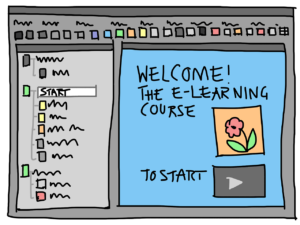Table of Contents
ToggleWhat to do after class 10th?
As Indian students complete their class 10th, they face a critical juncture in their academic journey. With various career options available, students are often left confused and overwhelmed. In this blog post, we will explore the different options available to Indian students after class 10th and help them make an informed decision about their future.
Table of Content :-
Option 1: Pursue Higher Secondary Education
Option 2: Enroll in a Vocational Course
Option 3: Join an Integrated Program that combines higher secondary education with vocational training
Option 4: Pursue Distance Learning
Option 5: Start a Business
Option 6: Join the Military
Option 7: Explore Creative Fields
Option 8: Take a Gap Year
Option 9: Join a Skill Development Program
Option 10: Pursue Higher Education Abroad
So let's start the Journey after Class 10th
Option 1: Pursue Higher Secondary Education

The most common and traditional option for Indian students after class 10th is to pursue higher secondary education. This includes enrolling in a school for classes 11th and 12th or a junior college. Students have the option to choose from different streams such as Science, Commerce, and Humanities, depending on their interests and future career plans.
The benefits of pursuing higher secondary education include a strong foundation in academics, personality development, and an opportunity to appear for various competitive exams such as JEE, NEET, and CA. However, the downsides include a rigid curriculum, lack of practical exposure, and intense competition.
Option 2: Enroll in a Vocational Course

Another popular option for Indian students after class 10th is to enroll in a vocational course. These courses are designed to impart practical skills and knowledge in specific industries such as hospitality, tourism, IT, and healthcare. Students can enroll in a vocational course directly after class 10th and start working in their preferred industry after completion of the course.
The benefits of enrolling in a vocational course include gaining hands-on experience, faster job placement, and a higher chance of employability in the relevant industry. However, the downside is that students may not have the option to switch industries later in their career and may need to upgrade their skills continuously to keep up with changing industry trends.
Option 3: Join an Integrated Program

Some Indian schools offer integrated programs that combine higher secondary education with vocational training. These programs are designed to provide students with a holistic education that includes theoretical knowledge, practical training, and personality development. Students can choose from various streams such as Science, Commerce, and Humanities and specialize in vocational training in industries such as IT, hospitality, and healthcare.
The benefits of an integrated program include a well-rounded education, hands-on experience, and a higher chance of employability in the relevant industry. However, the downside is that these programs may be more expensive than traditional higher secondary education, and the competition may still be intense in the job market.
Option 4: Pursue Distance Learning

Distance learning is another popular option for Indian students after class 10th. This includes enrolling in a correspondence course offered by various universities and educational institutions. Students can complete the course at their own pace and schedule, which allows them to work and study simultaneously.
The benefits of distance learning include flexibility, cost-effectiveness, and the opportunity to upgrade skills while working. However, the downside is that students may miss out on the practical training and exposure that traditional education offers.
Option 5: Start a Business

Entrepreneurship is becoming increasingly popular among Indian students, and some choose to start their own business after completing class 10th. Students can identify a gap in the market, develop a business plan, and start their venture with minimal investment.
The benefits of starting a business include financial independence, creative freedom, and the opportunity to make a significant impact on society. However, the downside is that entrepreneurship is a risky venture, and success is not guaranteed. Students may need to acquire various business skills and knowledge to ensure the success of their venture.
Option 6: Join the Military

Joining the military is another option for Indian students after class 10th. The Indian armed forces offer various opportunities for students to serve the country, including the Army, Navy, and Air Force. Students can appear for various entrance exams such as NDA and CDS to join the armed forces.
The benefits of joining the military include job security, a sense of patriotism, and the opportunity to serve the country. However, the downside is that the training and job requirements may be physically and mentally demanding, and there may be a high risk involved in certain operations.
Option 7: Explore Creative Fields

For students who are inclined towards creative fields such as music, dance, or art, pursuing a career in these fields is also an option after class 10th. Students can enroll in specialized institutions that offer training in their preferred creative field and work towards building a successful career.
The benefits of pursuing a career in creative fields include artistic expression, personal satisfaction, and the opportunity to make a mark in the industry. However, the downside is that the competition in these fields may be intense, and success may take time to achieve.
Option 8: Take a Gap Year

Taking a gap year is a popular option among students worldwide. It involves taking a year off from studies to explore different interests, travel, volunteer, or work. Students can use this time to gain life experiences, develop skills, and clarify their goals before pursuing further studies.
The benefits of taking a gap year include personal growth, gaining new experiences, and gaining clarity on career goals. However, the downside is that students may lose the momentum of academics, and it may be challenging to re-enter the academic environment after a year off.
Option 9: Join a Skill Development Program

With the Indian government’s emphasis on skill development, various institutions offer skill development programs for students after class 10th. These programs aim to provide students with industry-specific skills and knowledge that make them job-ready.
The benefits of joining a skill development program include gaining practical skills, higher employability, and job security. However, the downside is that these programs may not offer a well-rounded education and may limit career growth in the long run.
Option 10: Pursue Higher Education Abroad

For students who have the resources and inclination, pursuing higher education abroad is also an option after class 10th. Studying abroad provides an opportunity to experience a different culture, gain a global perspective, and access better educational resources.
The benefits of pursuing higher education abroad include a world-class education, better job prospects, and exposure to diverse cultures. However, the downside is that it may be expensive, and the cultural and linguistic differences may pose a challenge initially.
Final words:-
In conclusion, Indian students after class 10th have various options available to them, depending on their interests, career aspirations, and personal preferences. Each option has its advantages and disadvantages, and students should carefully evaluate their options before making a decision. It is essential to remember that no decision is irreversible, and students can always change their course of action if they feel they have made the wrong choice. But to make the right choice of career after your class 10th studies do follow our all social media platforms for career growth & clarity.


